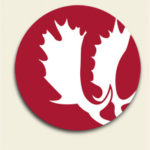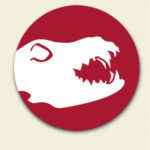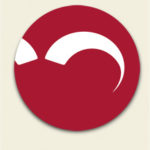SPECIES AND TOKENS
DEER
|
INSTRUCTIONS FOR TAKING MEASUREMENTS
1. Antler length
Measured along the outer curvature from the lower outer edge of the rosette to the end of the crown tip, that gives the greatest total length. The measuring tape will be pressed against the antler at 3-4 cm. of the rosette and in the measurement, efforts will be made, as far as possible, not to vary direction.
2. Length of the fights
Measured along the anteroinferior surface, from the junction with the rosette to the end.
3. Length of the center tips
Measured along the anteroinferior face, from the bisector that divides the angle formed by this lamp with the horn to the end of the central tip. If the centre tip splits into a fork, measure to the longest tip.
4. Perimeter of the rosettes
Measured in the thickest section of the same, saving the roughness with the measuring tape.
5-6-7 and 8. Perimeter of the antlers
Measured in the thinnest section of the indicated sections, without consideration of other possible existing tips.
9. Weight of the antlers
The weight is taken in kilograms, with an appreciation up to 10 g. of the antlers and the skull free of all foreign matter.
– With the complete skull and without lower jaw, 0.70 kg will be deducted of the total weight.
– With the skull sawed so that the upper teeth are missing, 0.50 kg will be deducted of the total weight.
– With the skull sawed, presenting only the front, nothing will be deducted from the total weight.
– With the skull sawed so that it has the pivots and very little more bone, 0.15 to 0.20 kg will be added of total weight.
10. Wingspan
The maximum internal separation between the antlers:
| Condition | Points |
| – If it is less than 60% of the average length of the antlers | 0 |
| – From 60 to 70 % | 1 |
| – From 70 to 80 % | 2 |
| – Greater than 80 % | 3 |
11. Number of tips
To be considered a point, it must measure at least two centimeters at the shortest part. Each lamp is valued with one point.
| Color | Points |
| – Light gray, yellowish or artificially dyed | 0 |
| – Gray to brown | 1 |
| – Dark brown to black | 2 |
| Pearls | Points |
| – Smooth antler surface | 0 |
| – Slightly pearlescent surface of the antlers | 1 |
| – Well pearled surface of the antlers | 2 |
| Tips | Points |
| – Porous or blunt | 0 |
| – Pointed and dark | 1 |
| – Pointed and white | 2 |
| Second fights (each one separately) | Points |
| – Short (2 to 10 cm.) | 0 |
| – Medium (from 10.1 cm to 15 cm) | 1 |
| – Long (more than 15 cm) | 2 |
| Crown | Points |
| – Short tips | From 2 to 10 cm |
| – Medium tips | From 10,1 to 15 cm |
| – Long tips | More than 15cm |
All the points above the central point are part of the crown, and are measured by the shortest part, from the bisector with the horn.
| Number of points between both antlers | Points |
| – From 5 to 7, short | 1 to 2 |
| – From 5 to 7, medium | 3 to 4 |
| – From 5 to 7, long | 4 to 5 |
| – From 8 to 9, short | 4 to 5 |
| – From 8 to 9, medium | 5 to 6 |
| – From 8 to 9, long | 6 to 7 |
| – 10 or more, short | 6 to 7 |
| – 10 or more, medium | 7 to 8 |
| – 10 or more, long | 9 to 10 |










